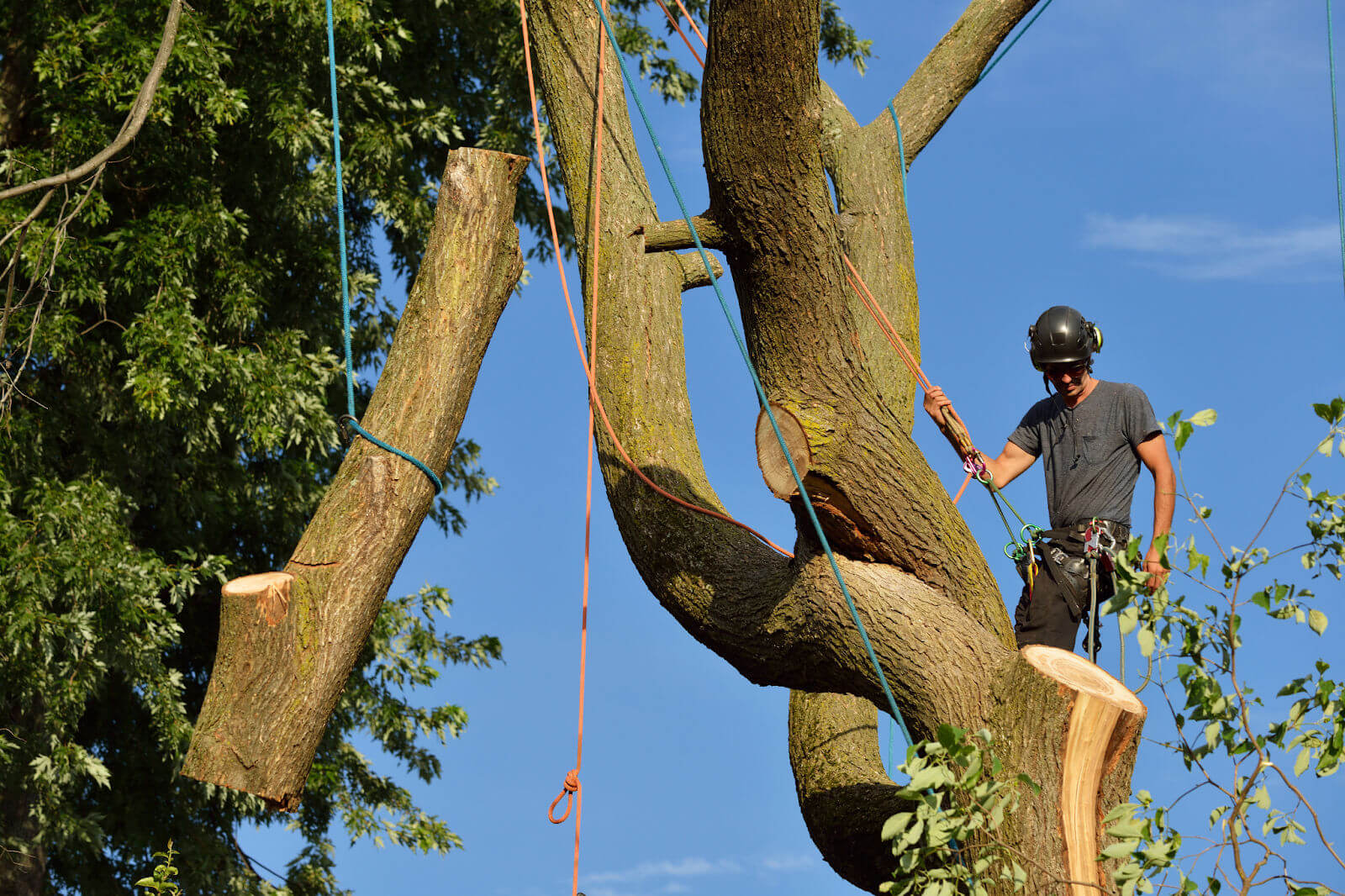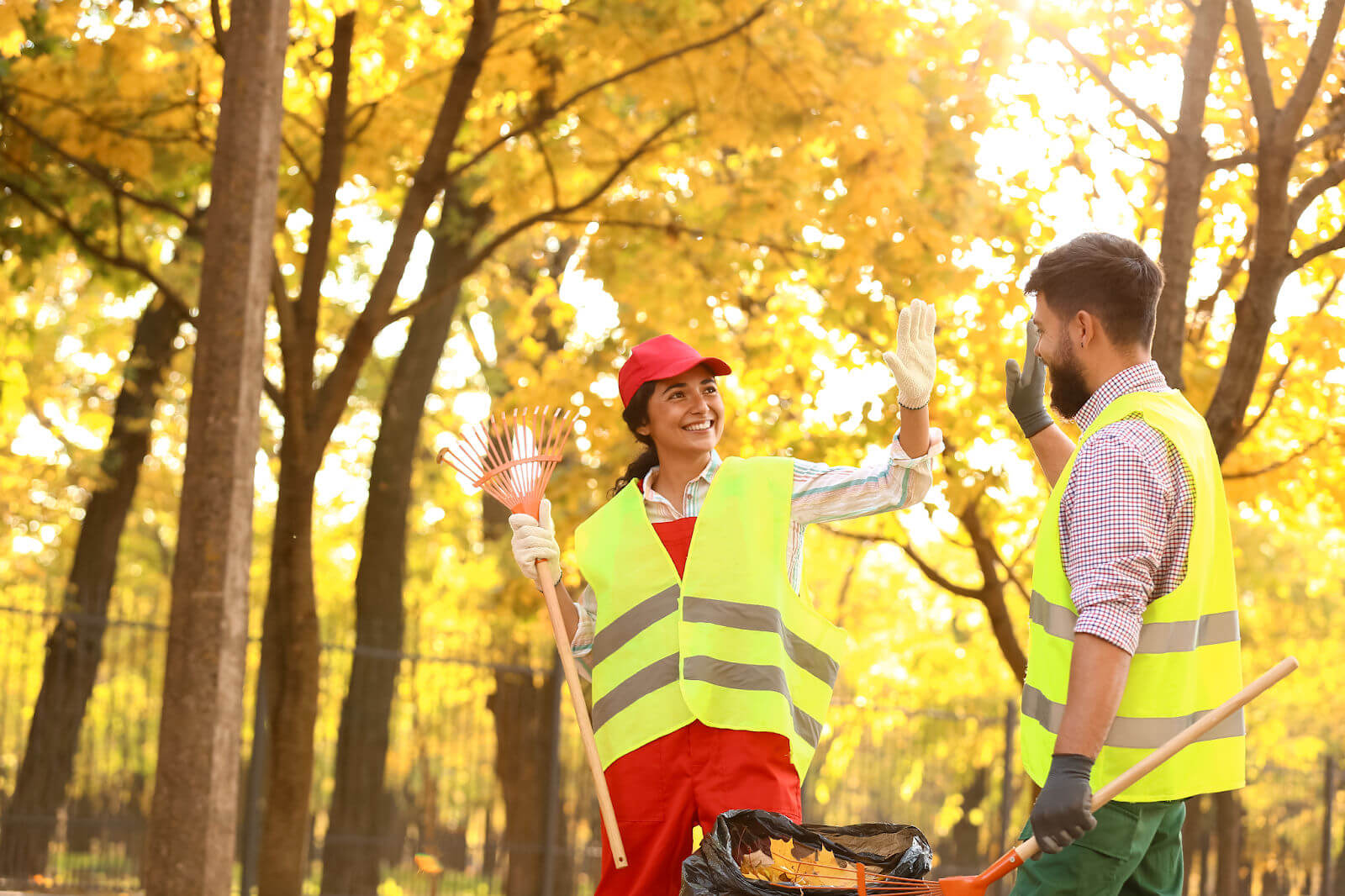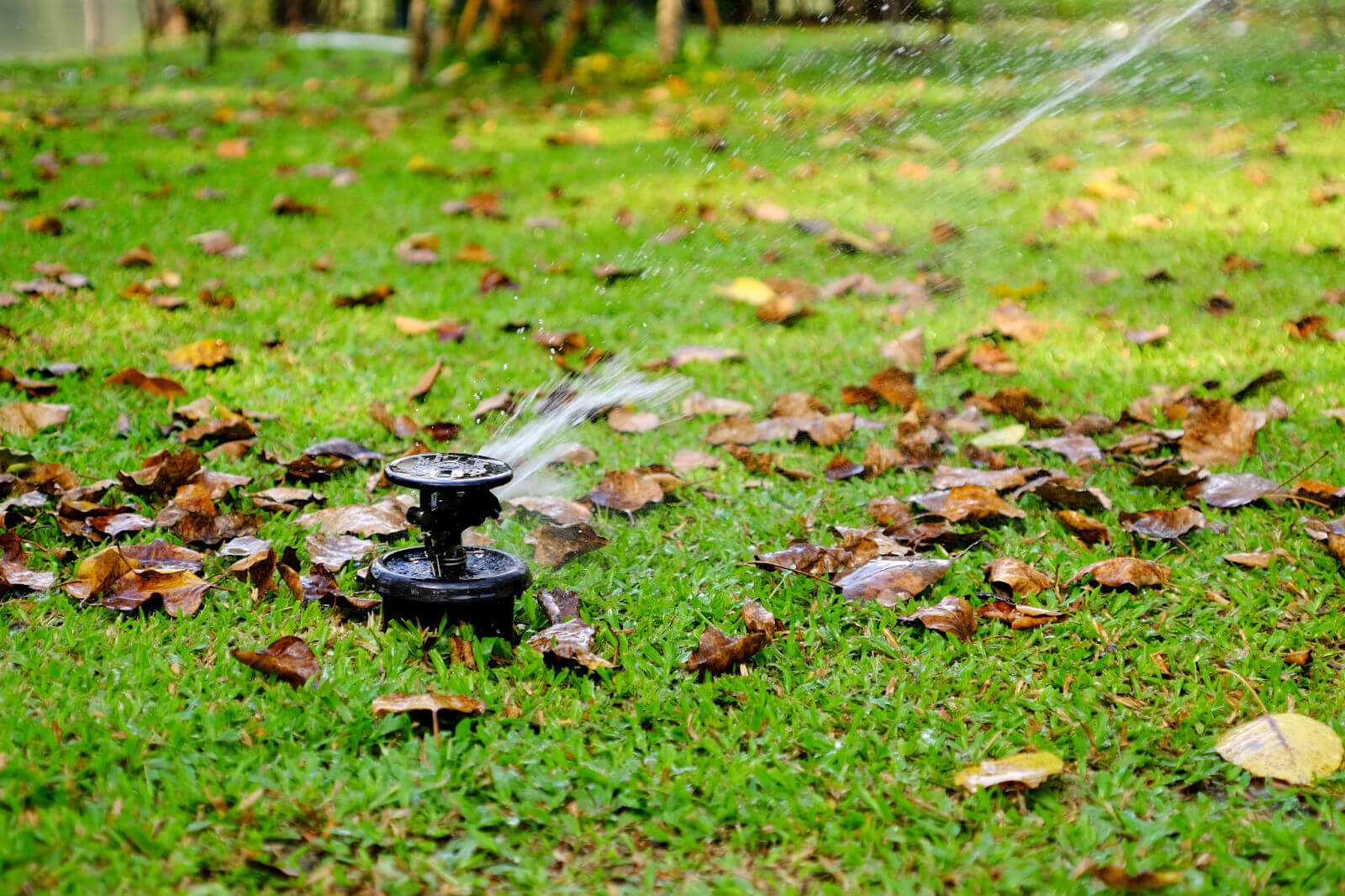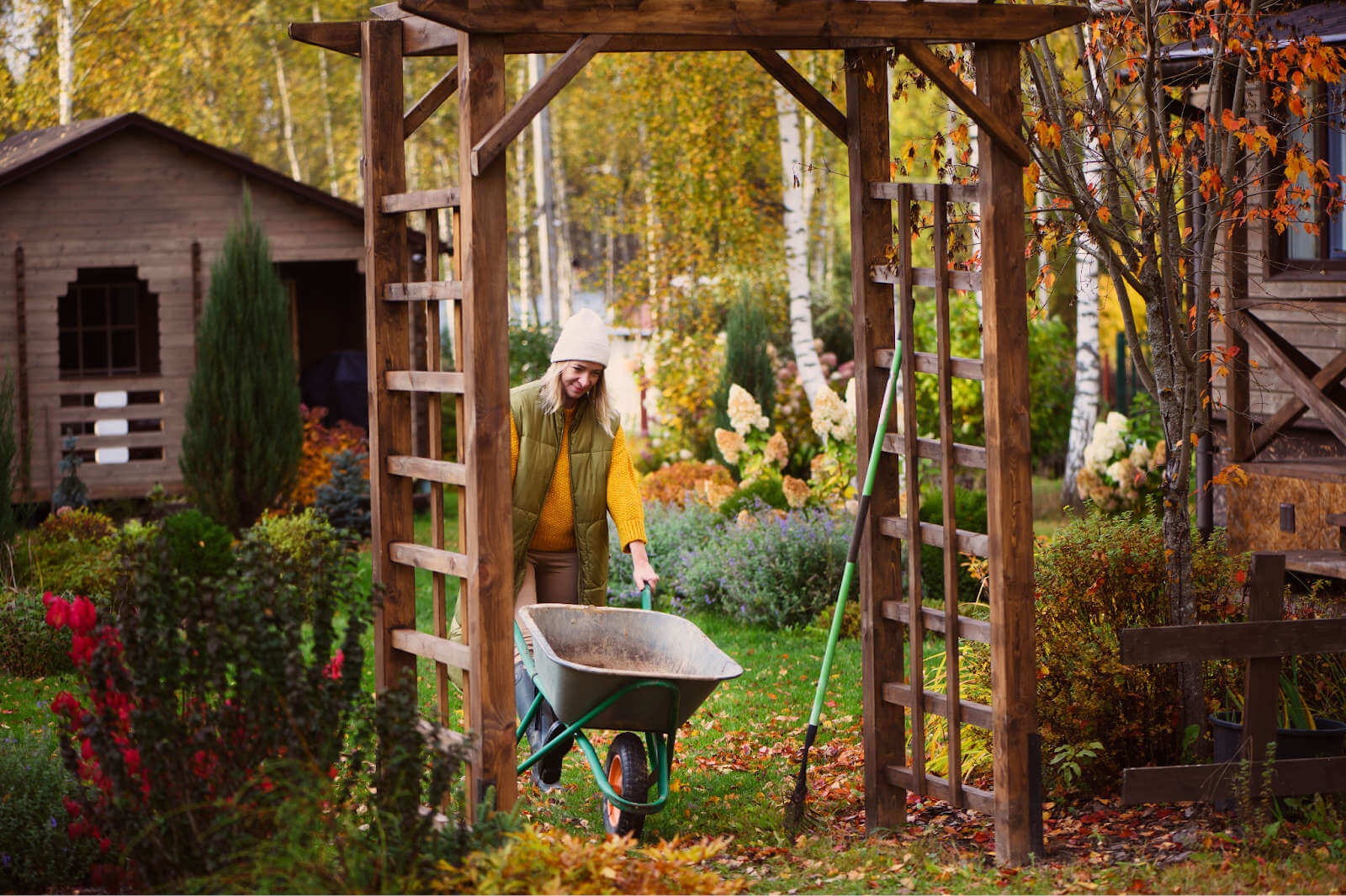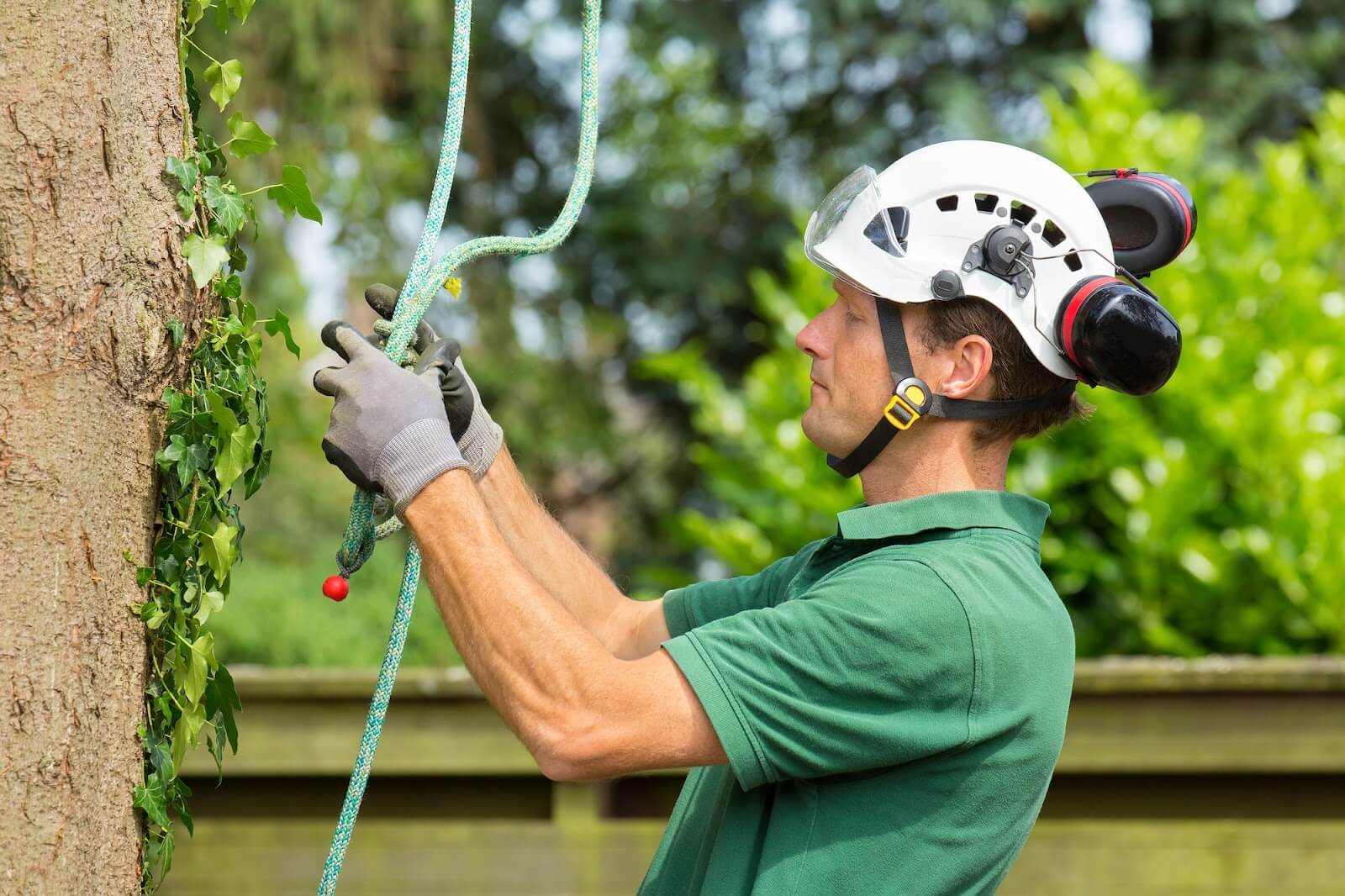Trees are the largest feature of any landscape, and while the trees on your property contribute to its beauty, they should also be taken seriously. When it comes to tree removal, the act of cutting it down needs to be conducted in a safe and professional manner. Read on to learn about the risks tree removal can pose, and how to prevent damage.
What to Know About Safe Tree Removal
The Dangers of Dead Trees and Fallen Limbs
While trees make excellent aesthetic additions to your landscaping, they can pose threats to you and your property. Healthy trees are typically nothing to worry about, even in relatively high winds. But how do you know a tree is healthy? Issues like disease, old age, pests, and storm damage can weaken trees to the point that they become fall risks. Sometimes the warning signs are clear, and other times it’s hard to notice. Periodically checking on your trees, or hiring a landscaper to check the trees on your property can ensure they are healthy and stay that way. Safe tree removal is critical to prevent your trees from causing damage.
What’s important is that you are proactive about the health of your trees, because it can save your property from damage and occupants from harm. Even when it’s obvious a tree needs to be removed, its issues can greatly complicate its removal.
So, what are the dangers of cutting down trees? Trees can weigh several tons, and reach heights that dwarf your home by the time they become mature. Their large mass becomes a formidable object against anything in your yard, including your home. Trees don’t usually die all at once. Branches and sections of a tree can die while other parts flourish, creating the illusion that the tree is healthy. As a result, trees don’t often fall all at once. Instead, limbs and sections of the tree die and decay until they fall. Sometimes it’s a result of high winds, but it can also happen when the weight becomes too much for the structure of a tree to bear.
Fallen limbs can be just as dangerous as full trees when it comes to property damage and bodily harm. If a root system dies, or the tree does die completely (which usually occurs in the trunk of the tree) a total collapse is possible. Falling trees can destroy homes, cars, block roads, and harm people or animals on your property. This is a serious risk, and it’s something a homeowner must take seriously if there are trees near the home. Tree removal is usually necessary to prevent damage from happening, but there is inherent risk in removing a tree as well.
Safe Tree Removal
Removing a tree does come with associated risks, including death. The safest way to remove a tree is to have it done by an arborist, or tree surgeon. Safe tree removal starts with a proper diagnosis of the issues.
How do you safely remove a tree? An experienced arborist is the best bet for safe tree removal. Arborists not only have experience and knowledge of trees that the average homeowners lack, but they also have the proper tools to get it done safely. The method of removing a tree piece by piece is generally the safest method, reducing a tree into smaller parts from the top down. It’s sometimes necessary to cut a tree down all at once, an act that’s called felling. Felling a tree involves using a chainsaw or ax to chop a tree down, and using ropes and other methods to guide its fall. An arborist can assist the tree in falling in a certain direction by cutting it in a particular way. This is an effective way to remove smaller trees that don’t pose the same level of risk, or are inaccessible to heavy machinery like lifts that enable removing a tree in pieces. You might be tempted to try this yourself if the tree is small or you’re worried about cost, but watching videos online won’t prepare you for the risks involved. Even smaller trees can fall in catastrophic ways. Consider the pressure that a trunk is under from the weight of a tree, even one that isn’t exceptionally large. Splintering wood as a tree breaks apart can cause cuts or harm your eyes if proper precautions aren’t taken.
Even if you cut the tree in a way that should cause it to fall in one direction, it can fall in the opposite. Things like internal decay, ground level, soil composition, and wind can all greatly change the trajectory of a fall. Besides the obvious risk of it falling on you or someone else, it can damage nearby property as well. Tree removal service is the safer option in every case. An arborist is your best bet for ensuring that your tree is removed safely and efficiently, and minimizing risk to yourself and others.
Getting Professional Assistance for Tree Removal
The Parke Company has been working with trees for years in the Nashville area, and our experienced arborists are all certified to perform tree inspections, limb removal, and total tree removal on your property. This is one area where cutting costs and doing things yourself can prove catastrophic, so it’s best not to attempt tree removal on your own. Tree removal near you can be affordable, and even if it’s more than you’d like to part with, the cost of peace of mind is much greater than the risks associated with doing it alone.
Tree removal is an incredibly risky proposition because nature is inherently unpredictable. If you’d like to learn more about what a qualified arborist from The Parke Company can do to help you with the trees on your property, from planting new trees to removing old ones safely, give us a call today.
